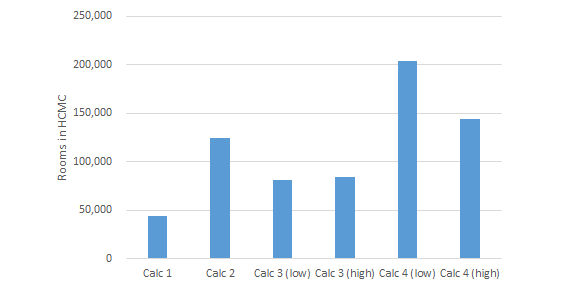Just a few things on my mind as we get back to work on this Monday post-Tet.
First, smoking. I read an interesting paper on smoking in Vietnam that indicated that a price increase of 2.8x (from VND22,000 to VND62,000) would cause 56% of smokers in Da Nang to quit. I love that the study put such an exact figure on the amount needed to stop smoking. It’s totally unrealistic. Heavy smokers will smoke no matter what, even if they can’t afford other things. And casual smokers will probably still buy, even at higher prices, because it is usually just an impulse purchase that ultimately is not a big part of their overall spending.
The big knock on cigarette taxes is that it falls disproportionately on the poor. For the poor that are addicted, they will still buy cigarettes and have much less money for other things. As a former smoker, I feel in my bones that this is true. Smokers will just find the money. But I still think it is worth it to stop people, especially young people, from smoking in the first place. If you never smoke, then you never need to quit. I know that sounds like a tautology, but it’s actually quite meaningful. Quitting is hard, really hard, but not smoking is easy. Quitters say that there is a part of them that always misses smoking. While a non-smoker, misses nothing.
I also found it interesting that there is room for the Vietnamese government to raise taxes without decreasing the volume of cigarettes, or at least not by much. Given what we know about the health affects of cigarettes, it makes sense to start raising taxes now to pay for the cancer coming in the future.
If you want to know what the most popular brands are in Vietnam, here’s your chart. Malboro is the most popular, like in the UK and the US, but lots of competition. And Australia has the most expensive prices for cigarettes, more than New York City.
Second, other types of tourism. The Guardian reviewed a new hotel in Vietnam. It is at the bottom of the Yen Tu mountain, the tallest mountain between Ha Noi and Ha Long Bay, so potentially a nice stop between the two destinations. The mountain itself has 6km of steps and paths up to the monastery. The hotel looks wonderful, and I can’t wait to go.
More important than my Vietnam bucket list is what this represents for tourism in the country. Vietnam actually has a lot of various tourist attractions, with cool urban centers, beach resorts, and history, both imperial and of the war. There has also been some adventure tourism, but mostly smaller groups organized by small companies. Now, I like these kinds of small groups, but I see the appeal of more mass market tourism. And something like Yen Tu can appeal to both. It allows some hiking, a religious experience, a cultural experience for foreigners, hopefully wrapped up in fancy hotels that result in more spending by tourists. It is quite difficult to add these types of experiences, especially in poor countries, but it really can drive tourism numbers.
The key is to not let these unique destinations be swamped, like we are seeing in Ha Long Bay. The government should start restricting numbers (and raising prices) for the most important destinations, but then funnel people to other, also interesting places. It’s extremely hard to do, but is essential.
Third, Brexit. I was listening to a Financial Times podcast on UK politics about Brexit, and the journalists were saying that Britain has been quite unsuccessful in signing new trade deals post-EU, or even signing up countries to roll over the EU deals to Britain. I started to wonder about Vietnam and their exports and imports to Britain. According to one source, UK exports to Vietnam are USD0.74bn, and Vietnam exports almost USD5bn to the UK. If I read these statistics correctly, merchandise trade was high as well, with GBP209m in exports from the UK and GBP1.2bn in imports from Vietnam in 2018. Vietnam was #11 in terms of exports from the UK, but only #5 in terms of imports. Again, these look to be only merchandise.
The issue is that Vietnam is currently in the final stages of negotiating a big deal with EU that should be signed in 2019. Now the UK has to ask for a separate deal post-Brexit. The UK government says that it will join the CPTPP, which is in place now, but that might take some time and depends on the UK’s status with the EU post-Brexit. If it is still part of the EU customs union, it might not possible or worthwhile, since the EU already has or is negotiating free trade agreements with 9 of the 11 countries in the CPTPP, like it is with Vietnam already. If not in the customs union, then Britain would probably like to join the CPTPP quickly, meaning it would have little leverage in negotiations, meaning it would get no say in the details.. But it would be able to show this success quickly while focusing on the much more important agreement with the EU.
It is hard to see how all of this is going to play out. I have always felt that the UK leaving the EU is not only bad for the UK, but also distracts it from doing anything else on other important issues. If you think about the real problems in the world (climate change, lack of faith in democracy, globalization leaving people jobless, inequality), Brexit addresses none of these. But it has taken up every iota of attention in the UK since the referendum back in June 2016. What a waste.































